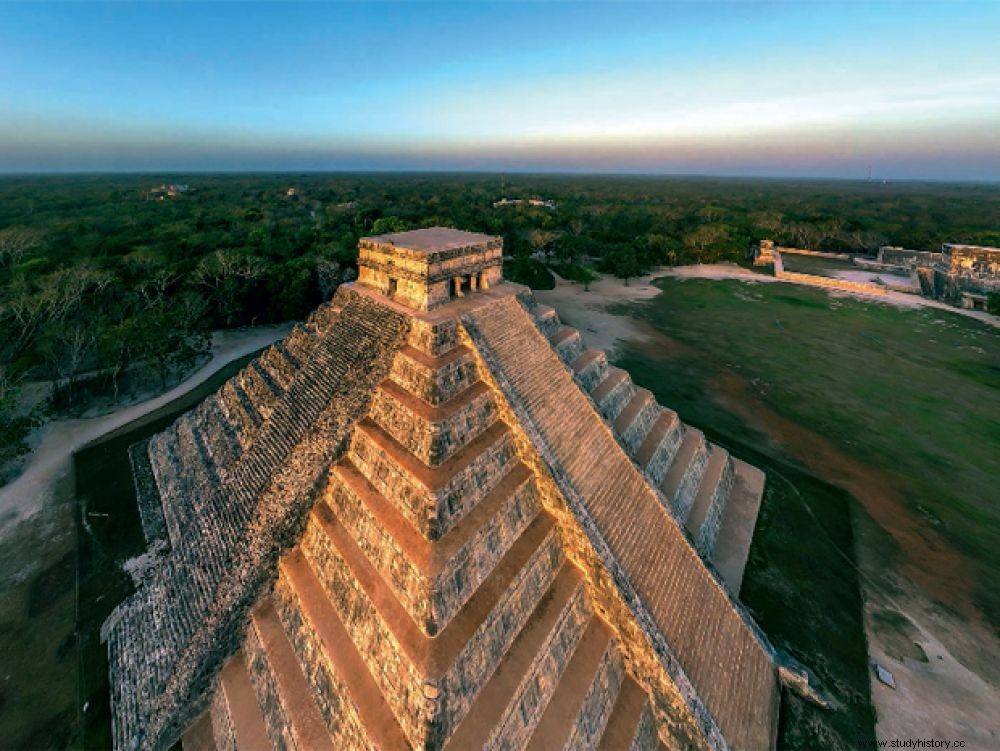In Central America, during the classical period, many pyramids became funerary monuments. And are encapsulated in each other, like "Russian dolls"!

The Temple of Kukulcan at Chichen Itza conceals two nesting pyramids.
Rising up to the sky, "La Danta" (tapir, in Spanish) dominates the emerald canopy of Petén (Guatemala). This pyramid built from a natural hill is the highest in the Mayan world:76 meters! "These impressive buildings, erected in the heart of great cities, were an emblem of power, explains Philippe Nondédéo, research fellow at the Archeology of the Americas laboratory (CNRS/Paris I University). However, their function has evolved over time."
"The idea was to follow the line"
When the first monumental architectures of the Maya civilization appeared, in the so-called Middle Pre-Classic period (600 BC - 300 BC), they were built for the worship of natural entities. "At their top is a set of three buildings, called “triadic”, which symbolize the three stones of the hearth and the center of the world" , continues the specialist. But in the classical period (2 e - 10 e centuries), when power is embodied by a king, many pyramids become funerary monuments. And are encapsulated in each other, like "Russian dolls"! "A first ruler was buried under a small platform, says Philippe Nondédéo. His successor in turn built a structure to the glory of his father, intended to cap the first. The next did the same, and so on. The idea was to follow the line."
A technique that revealed the secrets of these nested architectures
This was confirmed in 2016 by the analysis of a slightly later pyramid, that of Kukulkan (12 e century) - also known as El Castillo - at Chichen Itza (Mexico), one of the most imposing Mayan ceremonial centers on the Yucatán Peninsula. The use of a non-invasive imaging technique (3D electrical resistivity tomography) has clearly revealed the secrets of these nested architectures. "Nevertheless, not all pyramids were designed this way, says the archaeologist. Some were all in one piece, like the one in Tikal, Guatemala" . During the post-classic, when the monarchs lost their absolute power, the pyramids would again be dedicated to deities. They will still be built long after this time. This is the case, less than a century before the arrival of the first conquistadors, the city of Mayapan, in 1450.
This article is from the special issue of Sciences et Avenir "The science of builders", published in July/August 2019.
